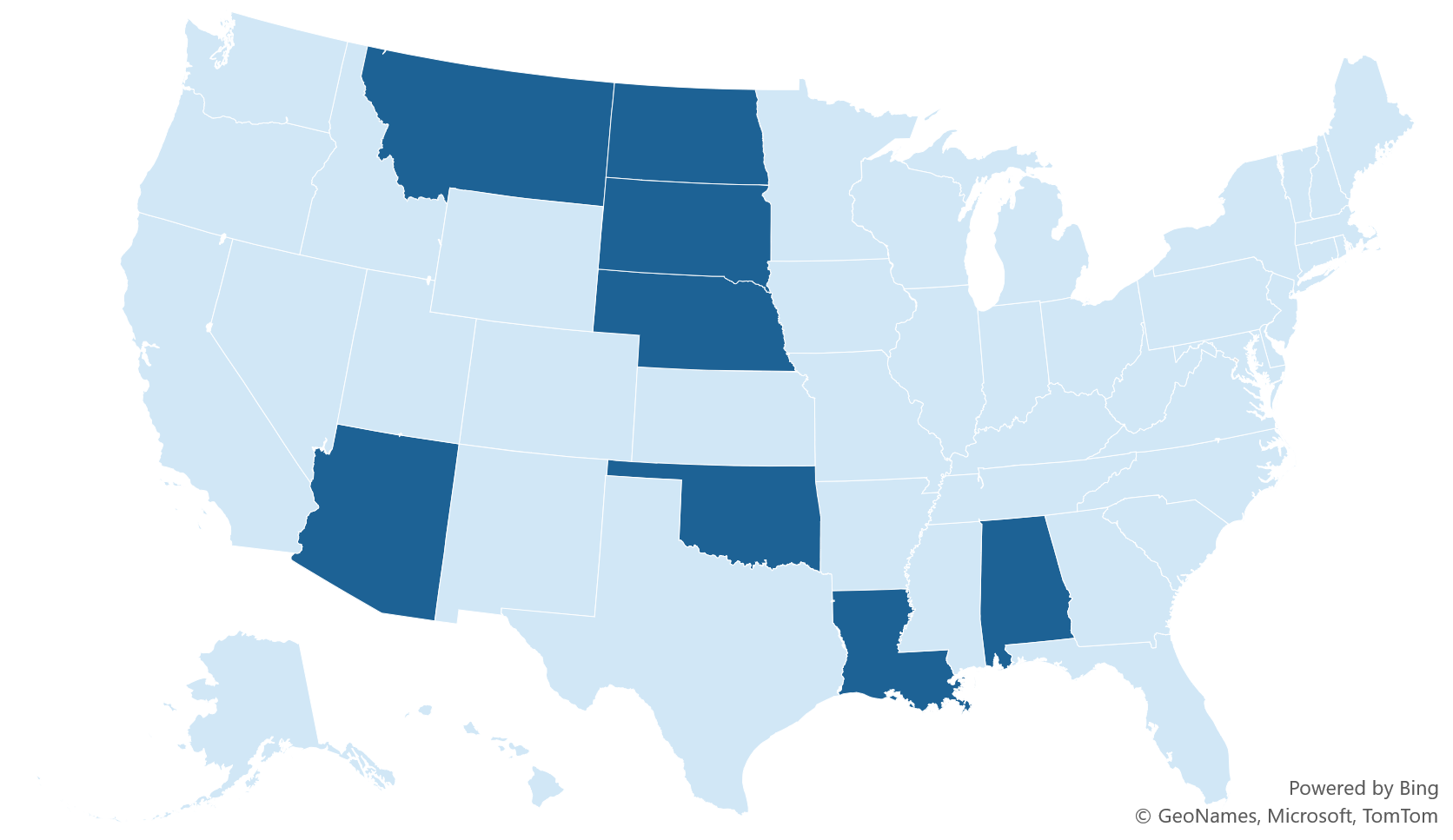
Public Utility Commissions (PUCs), Public Service Commissions (PSCs), Consolidated Commission, or Corporate Commissions — no matter what you call them, each state (and Guam) has a public commission governing how utilities in the state operate. In a previous digest, we examined the role of PUCs and how they work to protect utility customers while planning a state’s long-term energy security. Here, we will discuss the results of PUC elections in the eight states and one territory that had open commission seats this November (Figure 1). Note that in this digest, all commissions will be referred to as PUCs for simplicity.
Figure 1: States Holding PUC Elections, 2024

States that held PUC elections in 2024 are in dark blue. Guam also held elections for two of five seats on the Guam Consolidated Commission on Utilities but is not represented on this map.
Source: Ballotpedia.
The minority of states nationwide hold elections for their PUCs — just ten and Guam. In the other 40 states, commissioners are appointed by the state’s governor or legislature. Additionally, the minority of states have partisan PUCs — just eleven states, all of which are Republican with the exception of Illinois. Every state with elections for their PUCs are partisan with Republican majorities; Guam’s commission is nonpartisan (Table 1). This election cycle, candidates in Alabama and Nebraska ran unopposed.
Table 1: 2024 PUC Election Results

Elected candidates are listed in order of most to least fraction of votes received. Incumbents are indicated with asterisks. Elected candidates in states with PUC Districts have their District indicated.
Source: Ballotpedia.
Elections either take place within a set district or in a statewide, general election with no geographical boundaries. Georgia was meant to hold an election this year for two of its five seats, but the election was cancelled due to an ongoing lawsuit regarding the dilution of Black votes in the state’s general electoral structure. The incumbents retain their seats.
In examining the platforms of PUC candidates, across elections and party lines, three overarching themes emerged in 2024: energy reliability, energy affordability, and increasing efficiency of internal processes and external engagements. This general consistency speaks to how in an election cycle that heralded major changes at the federal level, state PUC elections seemed to play out in the background of American politics, despite a healthy amount of drama and novel issues to campaign around.
For instance, the Arizona Corporation Commission (ACC) flipped to a 4-1 Republican supermajority after the 2022 elections. That has enabled the body to approve the creation of new natural gas generation facilities as well as accompanying rate hikes to support the expansion of infrastructure. Additionally, the ACC introduced novel residential fees for rooftop solar installations. It should be noted that some of these hikes will flow toward Arizona’s “most vulnerable customers.” However, sustained rate hikes over a short period do have direct impacts on customers’ pocketbooks, which given the focus on energy affordability in races should have changed voter behavior. Yet the only incumbent to run, Lea Marquez Peterson, was popularly re-elected.
Similarly, a 28 percent rate hike in Montana was unanimously approved despite popular dissent in October 2023. The 5-0 Republican partisan control was maintained despite each District seat being actively contested. The only incumbent to run for re-election, Jennifer Fielder, was re-elected, although at a noticeably smaller margin than in other Districts — and against a write-in, Independent challenger, Elena Evans.
While the average American is not expected to be incredibly well-versed in utility policy, changes in utility bills are felt immediately and sharply. Yet, given the above election results it appears that voters may not have been very engaged with PUC elections in 2024, especially when comparing PUC voter turnout with total voter turnout (Table 2). Many voters chose to skip the commissioner sections of their ballots.
Table 2: Voter Turnout in States with PUC Elections in 2024

*In Arizona’s general Corporation Commission election, voters could vote for up to three candidates to fill the commission’s three seats. As a result, PUC voter turnout was calculated by dividing the Vote Cast for PUCs by three, for 2,808,300. The resulting percentage for PUC Voter Turnout is an estimate.
Sources: The Washington Post, Ballotpedia, Guam Election Commission, Louisiana Secretary of State’s Statewide Report of Registered Voters, Louisiana Secretary of State, Montana Secretary of State, Nebraska Secretary of State, The Oklahoman.
Lower voter participation in PUC elections suggests that candidates did not productively engage with voters. PUCs exist to represent the voices of the public in the utility space, which is difficult to effectively pursue with a disengaged voter base.
Policies approved by PUCs directly impact electric, gas, and water bills for households nationwide via rate changes. Additionally, PUCs approve utilities’ Integrated Resource Plans, which outline how utilities plan to manage their generation, infrastructure, and other resources over the course of multiple years. Without an engaged public to opine on issues like service areas, services, maintenance, expanding capacity, or renewable energy generation, utility customers may not see their cost, decarbonization, or electrification preferences represented in PUC policy.



